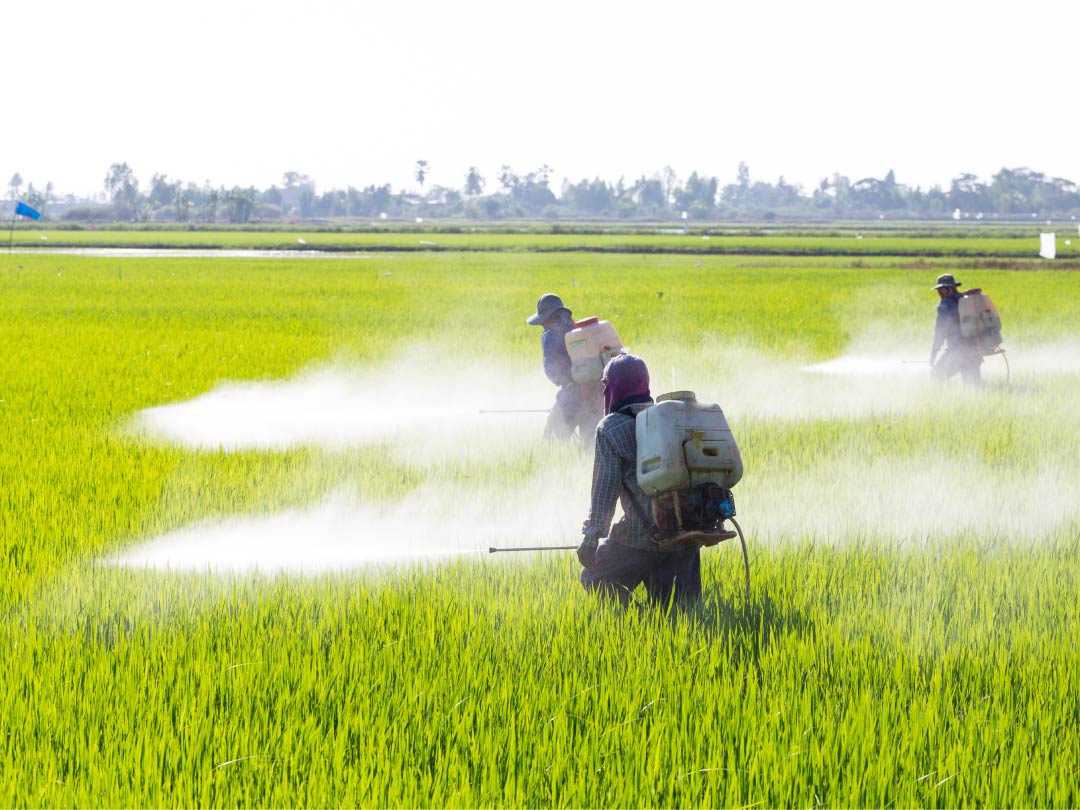
01 Jun Insecticide Resistance Management
Crop Protection Product A Component in IPM (Integrated Pest Management) for Insecticide Resistance Management
The evolution of resistance to insecticides is governed by a complex of events and factors: mainly because of over-application, repeated application of the same crop protection product or which employ the same mode of action. The mechanism of resistance due to specific biochemical changes that occur and the speed with which resistance develops, vary according to the specific insect concerned, and the chemical group, application rate and selection pressure (frequency of application) of the insecticide. Use of crop protection products has sometimes also increased in a vicious cycle as they kill not only their intended targets but also kill the natural enemies of the target species. Populations of natural enemies may have been greatly reduced when the pest species become resistant to the chemicals due to selective pressure the chemicals exert on their population genetics. In Malaysia, resistance to conventional and novel insecticide occurred in insect pest such as diamondback moth (Plutella xystella), brown planthopper (Nilaparvata lugens), rice stem borer (Scirpophaga incertulas), leaffolder (Cnaphalocrocis medinalis) and beet armyworm (Spodoptera spp). They have developed resistance due to intense insecticide application.
There are several factors that increase the rate at which insecticide resistance is generally developed. Some factors are related to the insect population itself; species with higher reproductive rates, shorter generation times, greater numbers of progeny, and larger, more genetically varied local populations develop a large resistance population more quickly. Whether the genetics basis of insect resistance is dominant, or recessive is also of importance. Other factors are dependent upon the insecticide. Resistance develops more rapidly to more persistent insecticides; their staying power in the environment increases the chance that susceptible individuals are exposed to the toxin and die, thus not passing their insecticide-susceptible traits to the next generation. This selects more strongly resistant insects because only the resistant insects thrive. By similar logic, frequent application of non-persistent insecticides has the same effect. Insect populations with little immigration into the gene pool of new, non-exposed susceptible individuals also developed resistance more readily. Populations that have in the past been exposed to insecticide with mode of action similar to that of a new insecticide are quick to develop resistance to the new toxin. This phenomenon is known as cross-resistance.
IPM is an ecosystem-based strategy that focuses on long-term prevention of pests or their damage through a combination of techniques such as biological control, habitat manipulation, modification of cultural practices, and use of resistant varieties. Crop protection products are used only after monitoring indicates they are needed according to established guidelines, and treatments are made with the goal of removing only the target organism. Thus, judicious use of crop protection product is generally accepted as an important pest-control tactic in integrated pest management programs, but not all pesticides are equally appropriate.
In developing an IPM program with crop protection products, it is essential to review product attributes, applications, and costs, then select the ones that provide the most cost-effective treatment with minimal undesirable effects. Some products have a broad spectrum of activity, while others only target a few types of pests. Selective substances are less likely to affect natural enemies and other non-target organisms, but they are often more expensive and less widely available. When they are available, it is important to determine if fewer applications of them are more cost-effective than a cheaper, broad-spectrum product that requires more applications.
Every crop protection product should be used according to manufacturers’ recommendations. These are designed to provide reliable control under normal field conditions. They also provide instructions on how to handle and apply the product safely. Recommended doses should be used to control pests and prevent them from developing resistance to products. Targeted and timely application of crop protection products is key to effective and efficient pest control. This requires the use of appropriate and well-maintained equipment as well as knowledge of pests.
All farmers are challenged with the fact that pests adapt to active ingredients and eventually become resistant to them without prevention strategies. IPM offers a range of ways to reduce the risk of resistance developing. This includes monitoring pest populations, applying treatments when the economic threshold is reached and implementing strategies, such as alternating or mixing compatible crop protection products with different modes of action.




